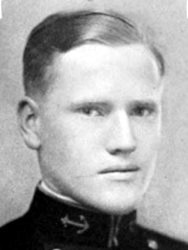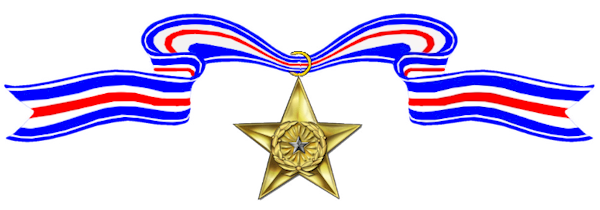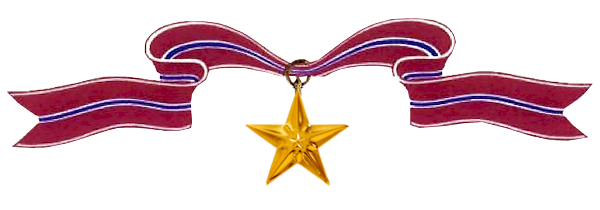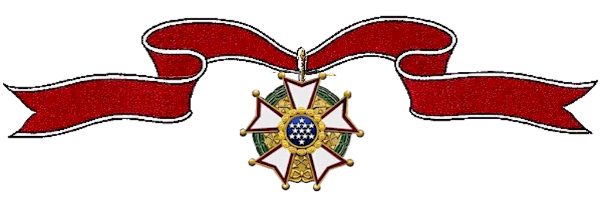Harold Deutermann graduated from the U.S. Naval Academy at Annapolis, Class of 1927. He retired as a U.S. Navy Vice Admiral.

–
Home:
,
Awards Received
-

Silver Star
-

Bronze Star Medal
-

Legion of Merit
-

Legion of Merit
-
Silver Star
Service:
United States NavyRank:
Captain [then Commander]Division:
U.S.S. Cogswell (DD-651)Action Date:
October 13 – 17, 1944
The President of the United States of America takes pleasure in presenting the Silver Star to Captain [then Commander] Harold Thomas Deutermann (NSN: 0-61428), United States Navy, for conspicuous gallantry and intrepidity in action as Commanding Officer of the Destroyer U.S.S. COGSWELL (DD-651), in operations during operations during the period from 13 to 17 October 1944. When his ship was assigned as a screening vessel to a Task Group protecting the withdrawal from enemy waters of two severely damaged ships, under tow, Captain Deutermann displayed outstanding seamanship in directing his ship through missions of rescue, of transferal of personnel under adverse conditions of wind and sea, and when under enemy air attacks. His skillful supervision was largely responsible for the excellent performance of his ship when in the screen and thereby greatly contributed to the successful accomplishment of the salvage mission. His administrative ability, indomitable fighting spirit and outstanding devotion to duty reflect great credit upon Captain Deutermann and the United States Naval Service.
-
Bronze Star Medal
Service:
United States NavyRank:
Captain [then Lieutenant Commander]Division:
U.S.S. San Juan (CL-54)Action Date:
August 7, 1942 – April 24, 1943
The President of the United States of America takes pleasure in presenting the Bronze Star Medal with Combat “V” to Captain [then Lieutenant Commander] Harold Thomas Deutermann (NSN: 0-61428), United States Navy, for meritorious service as Engineering Officer on board the U.S.S. SAN JUAN (CL-54), during operations against enemy Japanese forces in the Pacific War Area from 7 August 1942 to 24 April 1943. During the supporting bombardment of the landing of our Marines on Guadalcanal on 7 August and in the air attack the following day, Captain Deutermann directed the operations of the engineering plant during periods of constant maneuvering, frequently at high speed. During the Battle of Santa Cruz on 26 October, he was responsible for the successful performance of the engineering plant while operating at high speed in close proximity to other vessels of the Task Group and while under enemy air attack. His skill, courage and devotion to duty were in keeping with the highest traditions of the United States Naval Service. (Captain Deutermann is authorized to wear the Combat “V”.)
-
Legion of Merit

Commander Amphibious Forces Pacific: Serial 02974 (November 1, 1945)The President of the United States of America takes pleasure in presenting a Gold Star in lieu of a Second Award of the Legion of Merit with Combat “V” to Captain Harold Thomas Deutermann (NSN: 0-61428), United States Navy, for exceptionally meritorious conduct in the performance of outstanding services to the Government of the United States as Chief of Staff Officer to the Commander of the Objective Area Screen during operations against enemy Japanese forces during the assault and capture of Okinawa from March to June 1945. Demonstrating outstanding organizational and administrative ability, Captain Deutermann capably coordinated the numerous and diversified functions of the command to meet emergencies and provide adequate logistic support for all the ships of the group. Through his keen foresight and sound judgment, he was able to meet constant and intricate operational demands, thereby contributing materially to the success of the operation. His courage and devotion to duty were in keeping with the highest traditions of the United States Naval Service. (Captain Deutermann is authorized to wear the Combat “V”.)
-
Legion of Merit

Commander 2d Carrier Task Force Pacific: Serial 0948 (January 15, 1945)The President of the United States of America takes pleasure in presenting the Legion of Merit to Commander Harold Thomas Deutermann (NSN: 0-61428), United States Navy, for exceptionally meritorious conduct in the performance of outstanding services to the Government of the United States as Commanding Officer of a United States Destroyer assigned to a carrier task force operating against the enemy during the Palau and Philippine landing operations 30 August 1944 to 11 November 1944. He capably and effectively handled and fought his ship in more than thirty Japanese air attacks, a bombardment of enemy territory and a surface engagement, delivering certain damage to the enemy and stoutly defending our own forces. His leadership, tactical ability and conduct under fire were at all times in keeping with the highest traditions of the United States Naval Service.

